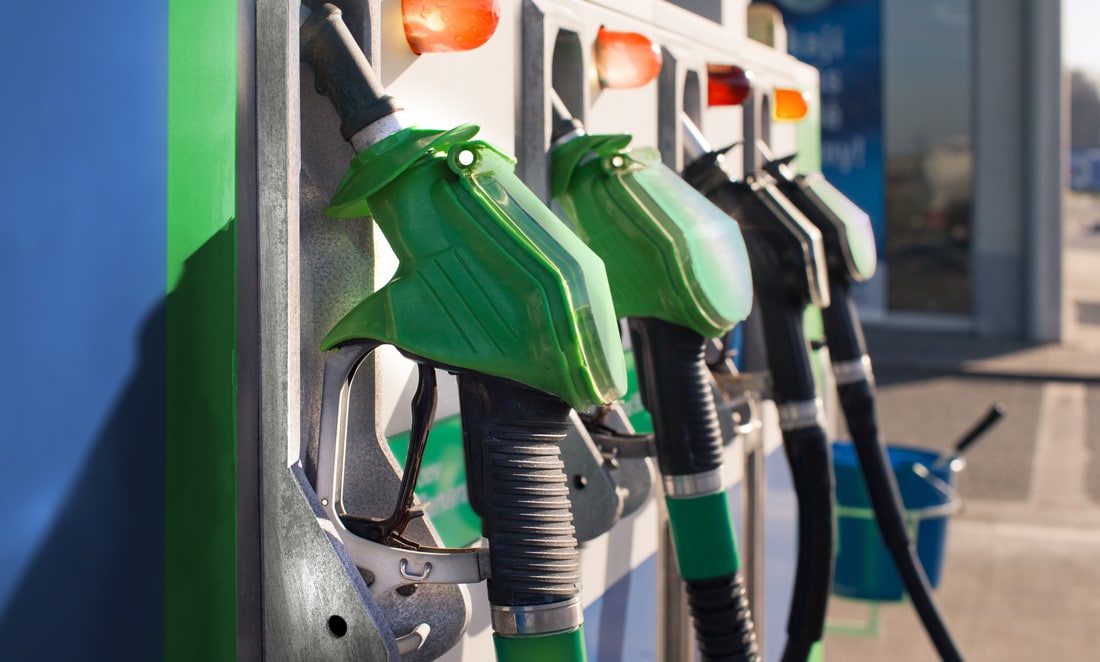
About This Project
ABSTRACT
BOS 200® successfully remediated petroleum hydrocarbon impacts at an active retail petroleum facility in Europe, achieving the remediation goal of eliminating vertical migration of impacted groundwater to competent limestone aquifer underlain the site.
CHALLENGES
Site characterization activities following the release identified residual petroleum contaminant mass from 23 to 45 feet (ft) below ground surface (bgs) over 13,000 ft 2 and Light Non Aqueous Phase Liquid (LNAPL) in five monitoring wells. Years of LNAPL removal and groundwater (GW) pump and treat efforts were ineffective. LNAPL persisted in monitoring wells and concentrations of benzene and other gasoline constituents were not significantly affected. Local geology consists of glacial till (clay with rock fragments and sand lenses) overburden to approximately 38 ft bgs. An uneven layer of weathered limestone is present above the competent limestone formation which starts at approximately 45 ft bgs. Groundwater is found at 25 to 28 ft bgs. Because the site is an active and very small facility, all injection related equipment had to be set up within a very small footprint (800 ft 2 ) during the pilot test. This access restriction had a significant effect on health and safety procedures and work efficiency.
APPROACH
A pilot test was performed to determine if Trap & Treat® BOS 200® could be effectively distributed in the difficult geology and to confirm the technology’s ability to treat LNAPL and residual mass. Prior to injection of the BOS 200®, a Remedial Design Characterization (RDC) high density sampling event was conducted throughout the impacted area. RDC data were used to develop a three dimensional high density conceptual site model of the hydrocarbon mass distribution within the pilot area and across the site. The high density sampling included: Membrane Interface Probe borings, continuous soil borings completed with samples collected every 2 feet, and installation of nested monitoring wells. Based on the supplemental analytical data generated from over 250 soil and 50 GW samples (provided at no cost to the client by the RPI Quality Assurance Laboratory), an optimized BOS 200® surgical injection strategy was developed.
SOLUTION
Pilot Test – May 2012, 8,800 lbs of BOS 200® , including 20 gallons of Trap & Treat® bacteria, was injected in 18 injection points spaced 7.5 feet apart. Pilot Test injections required 1 week to complete.
Full Scale – October 2014, 160,000 lbs of BOS 200® , including 320 gallons of Trap & Treat® bacteria, was injected in 285 injection points spaced 7.5 feet apart. Full Scale injections required 5 months to complete. Injections during the pilot study and full scale were completed from 23 feet to bed rock refusal at 45 feet in depth. Improperly abandoned bore holes from historical work at the site resulted in acute surfacing issues during injection. Significant effort and time was required to effectively abandon and seal these borings so work could progress.
RESULTS
Based on a successful pilot test that demonstrated LNAPL removal and significant reductions in dissolved concentrations, full scale injections were implemented. Five post full scale injection monitoring events have verified the elimination of LNAPL in all performance monitoring wells, including wells within the pilot area, and an average 94% reduction in benzene concentrations within GW across the site. The vertical migration of impacted GW to the competent limestone aquifer has been eliminated and verified based on downward trends in GW concentrations within bedrock monitoring wells.
To download a PDF of this case study, click RPI Case Study European Retail Gasoline Site.


